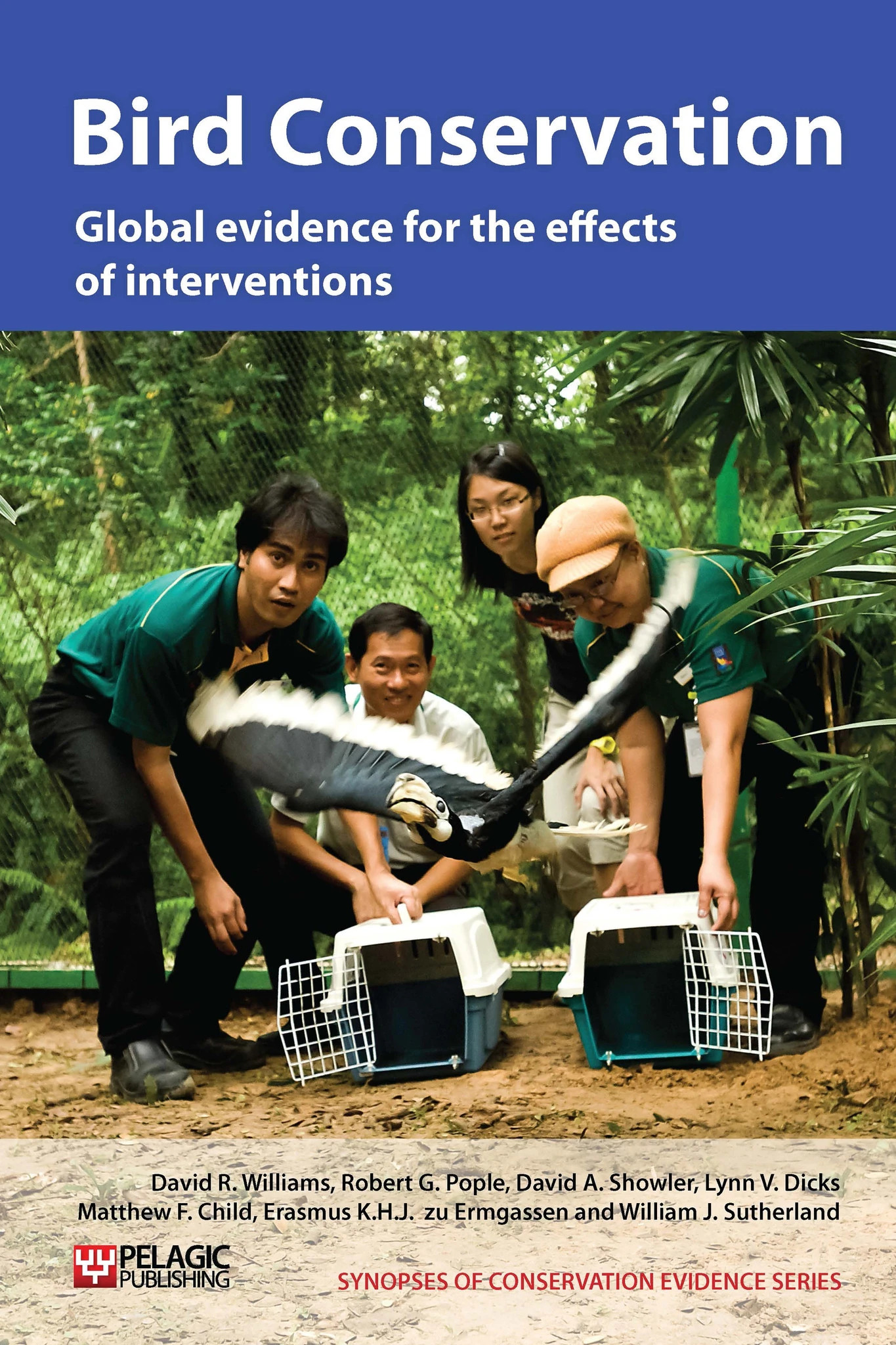Actions to conserve biodiversity
We have summarised evidence from the scientific literature about the effects of actions to conserve wildlife and ecosystems.
Review the evidence from the studies
Not sure what Actions are? Read a brief description.
Search for evidence
e.g. "frogs chytrid"
454 Actions found
Refine
Hide
454 Actions found
Download Actions
| 0 selected |
|
Order results by:
| Action | Effectiveness | Studies | Category | |
|---|---|---|---|---|
|
Exclude grazers from semi-natural habitats Action Link |
Trade-off between benefit and harms | 11 |
|
|
|
Protect nests from livestock to reduce trampling Action Link |
Unlikely to be beneficial | 2 |
|
|
|
Mark fences to reduce bird collision mortality Action Link |
Likely to be beneficial | 1 |
|
|
|
Create open patches or strips in permanent grassland Action Link |
Unknown effectiveness (limited evidence) | 1 |
|
|
|
Maintain traditional orchards Action Link |
Unknown effectiveness (limited evidence) | 2 |
|
|
|
Manage perennial bioenergy crops to benefit wildlife Action Link |
No evidence found (no assessment) | 0 |
|
|
|
Scare birds from fish farms Action Link |
Likely to be ineffective or harmful | 16 |
|
|
|
Disturb birds at roosts Action Link |
Likely to be beneficial | 5 |
|
|
|
Use electric fencing to exclude fish-eating birds Action Link |
Likely to be beneficial | 2 |
|
|
|
Use netting to exclude fish-eating birds Action Link |
Likely to be beneficial | 6 |
|
|
|
Disturb birds using foot patrols Action Link |
Unlikely to be beneficial | 2 |
|
|
|
Use ‘mussel socks’ to prevent birds from attacking shellfish Action Link |
Likely to be beneficial | 1 |
|
|
|
Translocate birds away from fish farms Action Link |
Unknown effectiveness (limited evidence) | 2 |
|
|
|
Increase water turbidity to reduce fish predation by birds Action Link |
Unknown effectiveness (limited evidence) | 1 |
|
|
|
Provide refuges for fish within ponds Action Link |
Likely to be beneficial | 1 |
|
|
|
Use in-water devices to reduce fish loss from ponds Action Link |
Unknown effectiveness (limited evidence) | 2 |
|
|
|
Spray water to deter birds from ponds Action Link |
Unlikely to be beneficial | 1 |
|
|
|
Deter birds from landing on shellfish culture gear using spikes on oyster cages Action Link |
Likely to be beneficial | 1 |
|
|
|
Deter birds from landing on shellfish culture gear by suspending oyster bags under water Action Link |
Likely to be beneficial | 1 |
|
|
|
Paint wind turbines to increase their visibility Action Link |
Unknown effectiveness (limited evidence) | 1 |
|
|
|
Mowing roadside verges Action Link |
Unknown effectiveness (limited evidence) | 1 |
|
|
|
Sowing roadside verges Action Link |
No evidence found (no assessment) | 0 |
|
|
|
Scare or otherwise deter birds from airports Action Link |
Likely to be beneficial | 2 |
|
|
|
Bury or isolate power lines to reduce incidental bird mortality Action Link |
Likely to be beneficial | 1 |
|
|
|
Remove earth wires to reduce incidental bird mortality Action Link |
Likely to be beneficial | 2 |
|
Download Actions
| 0 selected |
|

Bird Conservation - Published 2013
Bird Synopsis
Watch this search
If you are familiar with RSS feeds, please click the button below to retrieve the feed URL:
RSS feed for this searchIf you are unfamiliar with RSS feeds, we would suggest reading this BBC article.
Unfortunately, due to the number of feeds we have available, we cannot provide e-mail updates. However, you could use tools such as Feed My Inbox to do this for you.
What are 'Individual studies' and 'Actions'?
Individual studies
An individual study is a summary of a specific scientific study, usually taken from a scientific journal, but also from other resources such as reports. It tells you the background context, the action(s) taken and their consequences.
If you want more detail please look at the original reference.
Actions
Each action page focuses on a particular action you could take to benefit wildlife or ecosystems.
It contains brief (150-200 word) descriptions of relevant studies (context, action(s) taken and their consequences) and one or more key messages.
Key messages show the extent and main conclusions of the available evidence. Using links within key messages, you can look at the paragraphs describing each study to get more detail. Each paragraph allows you to assess the quality of the evidence and how relevant it is to your situation.
Where we found no evidence, we have been unable to assess whether or not an intervention is effective or has any harmful impacts.





)_2023.JPG)














